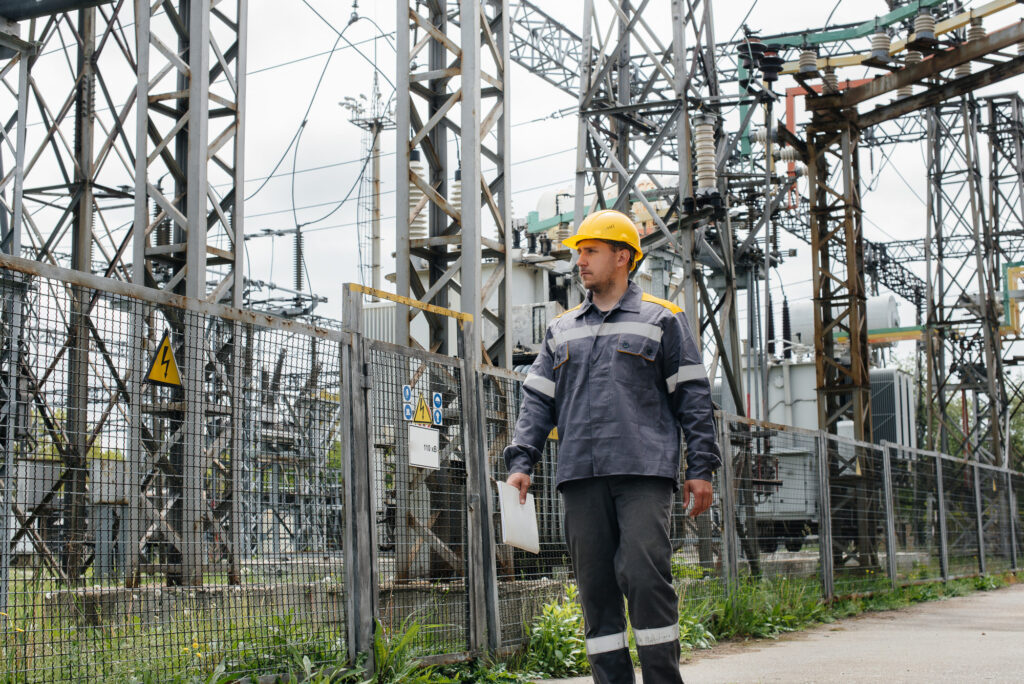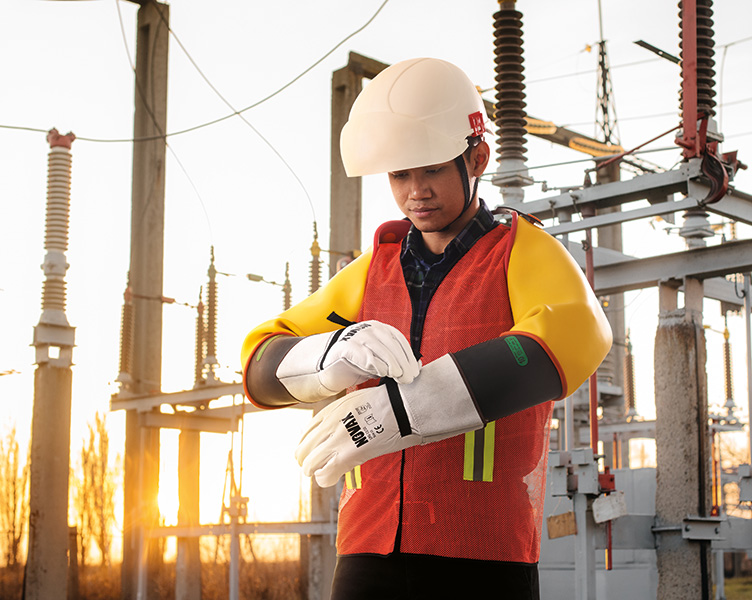
In the world of electrical work, safety should always take center stage, and one of your most vital companions in this realm is a reliable pair of insulation gloves. But with so many options available, how do you navigate the maze of choices to find the perfect pair that ensures you’re protected from shock and safely insulated?
From materials and ratings to fit and comfort, this ultimate guide covers everything you need to know to stay safe and shock-free when working with electricity.
Join us as we unravel the essential features, recommended brands, and best practices for selecting insulation gloves that empower you to work confidently, no matter the task at hand. Let’s gear up for a shock-free experience.
Understanding the Importance of Insulation Gloves in Electrical Work
Insulating gloves are the unsung heroes of electrical safety, forming a crucial barrier between you and the high-voltage currents you face every day. They’re specifically engineered to provide the insulation needed to prevent electrical shocks, from minor jolts to potentially fatal accidents.
In the field, the right pair of insulating gloves can be the difference between completing a routine task safely and facing a life-threatening incident. That’s why understanding their role isn’t just about following safety protocols — it’s about protecting lives.
Across the utility sector, industrial plants, and professional electrical environments, insulating gloves are indispensable. Whether you’re handling distribution lines, substation equipment, switchgear, or performing maintenance in high-risk electrical systems, these gloves provide essential protection against shock.
They act as a frontline defense for linemen, utility technicians, electrical contractors, and maintenance crews, who operate in environments where even a small mistake can have serious consequences. Choosing certified, high-quality insulating gloves goes beyond compliance — it ensures reliable protection, reduces risk, and supports safe, confident performance in demanding conditions.
When paired with leather protector gloves, insulating gloves also gain extra durability, helping them resist cuts, abrasions, and general wear while on the job. Investing in the right gloves isn’t just about safety — it’s an investment in your long-term protection, performance, and peace of mind every time you step onto the job site.

When selecting insulation gloves, the first feature to consider is the material. The effectiveness of the insulation is highly dependent on the material used in the gloves.
Typically, rubber latex is the go-to material for insulation gloves because of its excellent dielectric properties. Rubber gloves are designed to prevent the flow of electrical current, effectively insulating the wearer from potential shocks.
Moreover, rubber is flexible and can provide a good fit, which is crucial for dexterity and precision in electrical work.
Another key feature to look for is the voltage rating. Insulation gloves come with different voltage ratings, indicating the maximum voltage they can safely handle. It’s crucial to choose gloves that match the voltage levels you will be working with.
For instance, gloves rated for low voltage may not provide adequate protection for high-voltage tasks. Always check the voltage rating to ensure that your gloves meet the requirements of the job at hand. This helps prevent accidental exposure to dangerous electrical currents.
Comfort and fit are essential when choosing insulating gloves. Gloves that are too loose or too tight can make tasks harder and slow down your work. Look for gloves that fit snugly while still allowing full movement. Many insulating gloves are designed with ergonomics in mind, providing better comfort, flexibility, and dexterity on the job.
Additionally, consider gloves with inner liners made from materials like cotton or fleece for added comfort, especially if you’ll be wearing them for extended periods. A comfortable pair of gloves can enhance your productivity and reduce the likelihood of mistakes.

Insulating gloves are designed for specific applications, and in the utility and industrial sectors, the primary types are rubber insulating gloves, leather protector gloves, and composite gloves.
Rubber insulating gloves provide essential electrical protection. They are critical for high-voltage work and widely used by linemen, utility technicians, and electrical engineers. Tested to withstand high voltage levels, these gloves serve as the first line of defense against electrical shock.
Leather protector gloves are worn over rubber gloves to provide mechanical protection. While they do not offer electrical insulation, they shield the rubber gloves — and your hands — from cuts, abrasions, punctures, and general wear, extending the lifespan of the insulating gloves.
Composite gloves, such as the NOVAX Class 0 Composite & Arc-Rated Gloves, combine electrical insulation and mechanical durability into a single glove. They provide both shock protection and resistance to cuts, abrasions, and general wear, eliminating the need for separate leather protectors. This all-in-one solution is ideal for linemen, utility workers, and electrical contractors who require reliable, efficient, and high-performance hand protection in demanding environments.

Testing insulation gloves before each use is a critical step in ensuring your safety. The most common method for testing insulation gloves is the air test. To perform this test, first, make sure the gloves are clean and dry.
Then, roll the gloves from the cuff to the fingertips, trapping air inside. Hold the gloves against your ear and listen for any hissing sounds, which would indicate a leak. If you hear any air escaping, the gloves are compromised and should not be used.
In addition to the air test, visual inspection is equally important. Carefully examine the gloves for any signs of wear and tear, such as cuts, punctures, or cracks. Pay close attention to the fingers and palm areas, as these are prone to damage.
Even the smallest defect can compromise the integrity of the gloves and put you at risk. If you find any damage, replace the gloves immediately. It’s better to be safe than sorry when it comes to electrical safety.
For a thorough inspection of your insulating gloves, a glove inflator is the recommended tool. This device inflates the gloves and allows you to check for air leaks, punctures, or other defects that could compromise their insulating properties.
While the method is straightforward, it’s most effective when performed regularly, particularly for gloves that are used frequently. Periodic testing with a glove inflator helps ensure your insulating gloves remain safe and reliable for every task.

Voltage ratings are a critical factor to consider when choosing insulation gloves. These ratings indicate the maximum voltage the gloves can safely handle, and selecting the appropriate rating is essential for ensuring your safety.
Insulation gloves are classified into different classes based on their voltage ratings, ranging from Class 00 for low-voltage applications to Class 4 for high-voltage tasks. Each class has a specific maximum use voltage, and it’s crucial to choose gloves that match the voltage levels you will be working with.
For example, Class 00 gloves are designed for low-voltage applications up to 500 volts, making them suitable for tasks such as residential electrical work and small-scale repairs. Class 0 gloves are rated for up to 1,000 volts and are commonly used for commercial and light industrial applications.
For higher voltage levels, Class 1 gloves are rated for up to 7,500 volts, Class 2 gloves for up to 17,000 volts, Class 3 gloves for up to 26,500 volts, and Class 4 gloves for up to 36,000 volts. Selecting the appropriate class ensures that you are adequately protected for the specific voltage levels you will encounter.
It’s also important to note that voltage ratings are not the only consideration when selecting insulation gloves. Other factors, such as the type of work, environmental conditions, and potential physical hazards, should also be taken into account.
For example, if you are working in an environment with sharp objects or abrasive surfaces, you may need gloves with additional mechanical protection. Understanding the significance of voltage ratings and considering other relevant factors helps you make informed choices and ensures your safety while working with electricity.

Proper maintenance and care of insulation gloves are essential for ensuring their effectiveness and longevity. One of the most important aspects of glove maintenance is regular cleaning. Dirt, oils, and other contaminants can compromise the insulating properties of the gloves, so it’s crucial to keep them clean.
To clean rubber insulation gloves, use a mild soap solution. Avoid using harsh chemicals or abrasive materials, as these can damage the gloves. After cleaning, rinse the gloves thoroughly with clean water and allow them to air dry.

In addition to cleaning, proper storage is also important for maintaining the integrity of insulation gloves. Store the gloves in a cool, dry place away from direct sunlight, heat sources, and chemicals.
Avoid folding or creasing the gloves, as this can cause damage over time. Instead, store them flat or hang them by the cuffs to maintain their shape. Proper storage helps prevent premature wear and extends the life of the gloves.
Regular inspections are also a key part of glove maintenance. Before each use, perform a visual inspection and an air test to check for any signs of damage or wear. If you notice any defects, such as cuts, punctures, or cracks, replace the gloves immediately.
Additionally, consider having your gloves tested by a professional periodically to ensure their dielectric properties are intact. Proper maintenance and care of insulation gloves are essential for ensuring your safety and maximizing the lifespan of the gloves.
Choosing the right insulation gloves is essential for ensuring your safety and effectiveness in electrical work. Understanding the importance of insulation gloves, key features to look for, and the different types available helps you make informed choices.
Proper testing, maintenance, and care of insulation gloves are also crucial for ensuring their effectiveness and longevity. Avoiding common mistakes and considering the specific hazards of your work environment further enhances your safety.
By selecting the right insulation gloves and following best practices, you can work confidently and safely with electricity, investing in quality insulation gloves is an investment in your safety and well-being.
With the right knowledge and tools, you can stay safe and shock-free while tackling any electrical project.
Ready to upgrade your PPE?
No. 75-2 Jalan USJ 21/11,
47630 Subang Jaya,
Selangor Darul Ehsan,
Malaysia.
Lot 3850-3855 Chembong Phase II,
Industrial Estate Chembong,
71300 Rembau, Negeri Sembilan,
Malaysia.
Copyright © 2025 G.B. Industries Sdn Bhd.
All rights reserved.